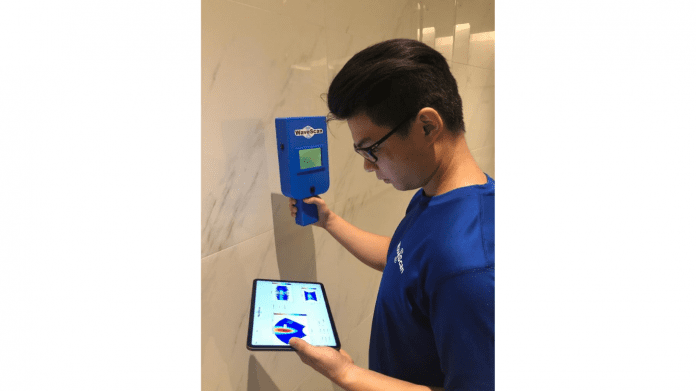There have been recent reports of the 126-year old Mullaperiyar dam that has been giving sleepless nights for the people of Kerala and Tamil Nadu. Special committees composed of technical experts have been formed to conduct Non-Destructive Evaluation (NDE) and Non-Destructive Testing (NDT) of the dam. Although the fear still looms high over the strength of the century-old dam, the court has given its verdict based on the findings of the expert committee. So how did these experts conduct these evaluations on a dam? Which technology has been incorporated for this?
Non-Destructive Testing (NDT) is a technique that is used in the evaluation of properties of a material, component, structure or even a system. It helps to carry out inspections without causing any permanent damage to the structure. It avoids any kind of invasive approach that could affect the integrity of the structure. These testings are considered safe, economical and preferred by most evaluators. It has found several applications in various sectors including aviation, infrastructure, oil and gas, automotive and similar others.
According to a report from Fortune Business Insights, the Non-Destructive Testing Market is projected to grow from USD 6,300 million in 2021 to USD 14,800 million in 2028 at a CAGR of 12.98 percent in the forecast period.
WaveScan, a Singapore-based company that specializes in the R&D of disruptive beamforming electromagnetics based smart sensor systems and advanced AI algorithms, recently kickstarted an 18-month development project with the Housing Development Board of Singapore (HDB) to develop an AI-driven inspection software with automated data collection. We spoke to Dr. Kush Agarwal, CEO of WaveScan to learn about the NDT technology and about the new partnership.
The following are the excerpts of the interaction with World Business Outlook
As a market leader in the sensor-based technology sector, please share with us the total market size of this industry? What is the volume of this market in the APAC regions and if possible, in other parts of the world?
The non-destructive testing, which is NDT, market spans across various industries
· APAC ~12-15%
· North America 34%
North America emerged as the dominant segment in 2020 with a revenue share exceeding 34.0%. This is attributed to the adoption of NDT techniques across numerous applications, the availability of a skilled workforce, and the number of non-destructive testing training institutes in the region. Furthermore, power generation using shale oil in the U.S. and Canada is expected to positively impact the growth rate in the region. Besides, the growing emphasis on the use of NDT to avoid unexpected failures of systems is expected to drive the regional market.
In Asia Pacific, the market is expected to witness a CAGR of more than 8.0% over the forecast period. This growth is ascribed to an increase in manufacturing, construction, and power generation activities in the region. Although the region faces a scarcity of skilled labour currently, it is expected to reduce, as the awareness and adoption of non-destructive testing techniques increases in the coming years. Furthermore, the Middle East, due to the significant presence of the oil and gas industry, is expected to be a potential market for NDT techniques.
Simplify the entire working of beamforming electromagnetics smart scanner technology.
Our scanner systems use electromagnetic waves under safe transmit power limits. These waves travel through different mediums, including air, and are reflected back simultaneously. Based on these back reflections, we create 3D images of the entire structure with exact spatial data that correlates each data point with its precise x, y, z locations. This can be achieved at a resolution of 1 millimeter, which means we can image objects with a spatial resolution of 1 mm.
Using electromagnetic beamforming techniques, our smart scanners perform fully contactless see-through imaging at higher scanning speeds, without compromising the high millimeter or centimeter scale resolutions. This is important for structural scanning because we need highly accurate 3D spatial data for identifying the defects embedded inside the structures.

Since we use electromagnetic waves, we can penetrate a variety of structural materials ranging from wood, cement to high density materials such as concrete. This makes our scanners highly useful for infrastructure and building maintenance.
Using these advanced scientific techniques, we have developed modular and lightweight scanner systems that integrate into multiple automation platforms such as drones and robotic arms. This allows for complete automation of the data collection process.
Enlighten us about the development of the radar-based smart scanner systems across the globe and later on across the APAC regions. What led to the evolution of the current iteration of the beamforming electromagnetics smart scanner systems that we see today?
There are a few research labs working on high frequency scanners for imaging applications. While most of these labs are in the US or Europe, some labs in China have also demonstrated high frequency systems. In Asia Pacific, from my experience, Singapore is one of the most advanced nations in wireless research. In fact, we were developing the core underlying scanner technology in Singapore’s national research agency institute, which is called A*STAR Institute for Infocomm Research for almost a decade before WaveScan was officially spun off and incorporated in late 2018. This field of research requires a high amount of investment in measurement setups and training scientists that conduct research and product development, so a strong funding support from Singapore’s government has been helpful for us to come this far.

Beamforming techniques are currently being used in fast emerging sectors such as telecommunications in 5G and autonomous driving radar equipment. We have been applying advanced electromagnetic beamforming techniques for 3D imaging applications to achieve higher levels of scanning speed, which directly correlates to time of scan and hence dollar value per sq meter of scanning. We have also managed to enhance other scanner parameters such as spatial resolution, stand-off distance – which is separation from the asset, among other scanner features using these beamforming techniques.
How is AI enhancing the overall performance, accuracy and the experience in sensor-based technology?
At WaveScan, we have been developing machine learning algorithms to automate the data analysis process. For this, we are using AI techniques for material classification and defect tagging on 3D images generated from our scanners. Once the scanned data is filtered, processed, and labelled using these techniques, a professional engineer can then selectively analyse and review the labelled defects that have been classified under various categories. This extent of automation of the analysis process will minimize the work (and hence involvement) of professional engineers, which are a costly resource in such inspections and maintenance procedures. As we continue to collect more field data from assets and advance our algorithms, in the future, AI would enable predictive analysis of defects to allow inspectors to plan for repairs. This is our vision where the industry can eventually move towards the practices of data-driven maintenance.
Do share some of the breakthroughs your R&D team have achieved in the sensor-based technology sector.
On a commercial scale, we have developed a first-of-its kind 3D imaging technology that can achieve 4-6 times higher scanning speed at mm or cm scale, with precise x, y, z localisation data. We are launching our first commercial product, our microwave scanner this month.
WaveScan has also validated and demonstrated the merits of our technology in multiple industry verticals on an industry scale of deployments. We are continuing to develop various use cases in other industries (such as oil & gas and aerospace) through paid pilot projects, as well as infrastructure.

We are also currently working on developing the next version of our scanner technology through continuous R&D within WaveScan and A*STAR. This scanner system will have 25 times higher scanning speed and a stand-off distance of up to 3 meters, which is best suited for integration on drones. To the best of our knowledge, we are the first ones to achieve this level of 3D imaging scanning technology with such enhanced features best suited for commercial applications.
Tell us about the strategy you adopted while approaching the VCs for the seed fundings.
The deep tech ecosystem in Singapore is still evolving and there are only a handful of VCs that invest in early stage, pre-product startups. For us, we are building hardware technology that has a long bench to product timeline. Since our scanners are wireless equipment, they also need regulatory clearance and certifications. This prolongs the product launch and sales/revenue traction.
For WaveScan, we were fortunate to have a strong support from Singapore government, resulting in a few government grants that helped us develop the technology to functional prototype stage where we started conducting paid pilot projects with clients. We were very focused on our approach with VCs – either ones who have invested in deep-tech before or large companies with their own venture funds. We wanted smart money, together with the support such as manufacturing assistance, client introductions, strong network for scaling up internationally.
Luckily, all our investors bring this to the table, besides their investment cash into the company.
What are the latest developments in the new partnership between WaveScan and HDB?
We have embarked on an 18-month long development project that focuses on operationalising our technology for both indoor and outdoor inspections in HDB estates. We are test-bedding 3 robotic technologies during this project – robotic arms, wall-climbing robots, and drones (in 2022). The goal of this project is to develop an AI-driven inspection software along with automated data collection processes such as robotic arms and drones using WaveScan’s proprietary scanning technology. The project entails the collection of data from residential estates of different ages across the country to build a robust database of construction materials and structural defects.
This project targets the infrastructure use cases of structural inspection (condition monitoring of rebars embedded within concrete, voids and cracks), façade inspection (identification of disbonds and delaminations, condition monitoring of metallic brackets under façade panels) and water leakage detection.

Through this project, the objective is to develop an inspection technology solution that enables the HDB to embark on a data-driven, predictive and proactive maintenance of assets, potentially on an island-wide scale. The project would also include the development of a drone-integrable version of the microwave scanner for high-rise inspections.
This is an ideal project to study the potential of our scanning technology with such a large-scale client like HDB, and upon successful adoption, we can replicate this model with other countries/cities also working on adopting newer technologies for smart asset maintenance.
Kindly share with us some used cased scenarios of the NDT technology across various sectors. If there is some particularly interesting application of the NDT technology in some fields, we would like to know about that as well.
Using our scanners in the infrastructure domain, we can identify sub-surface defects such as cracks, corrosion, and precursor pitting as well as embedded structural defects such as tile disbonds, delamination, and loose or broken metal brackets for facade inspections. The same scanners can be used for structural defects in concrete structures and indoor facility maintenance issues such as scanning hidden pipelines and wiring, pest and rodent infestation detection behind walls and floorings, and water leakage detection. Our solution also applies to the oil and gas, automotive, and aviation sectors for diverse structural inspections. Once the user knows the structural info of the asset, they can plan the repair work and safety measures as per the industry standards and protocols.
Five years down the line, with the latest developments in 5G technology, AR, VR, AI and ML, what are the technological innovations we could expect?
As all the technological advancements are happening in tandem, the world we live in is evolving fast. On a day-to-day basis, our human behaviour and habits of interacting with the world around us is readjusting with full scale automation and digitalization boom happening right now. The use of robotics for example has taken over a lot of industrial day to day jobs with high efficiency and accuracy, not to mention the repeatability of these tasks.
In the Built Environment sector, right from the building planning stage, people are using advanced BIMs and simulating every possibility to design highly intricate structures. AR, VR and other digital technologies are being used to experience the spaces that haven’t even been built yet. Similarly post-construction, the industry is quickly adapting automation technologies such as drones and robots for automated inspections. We are seeing AR integrated into scanning technologies. New sensors are being deployed right from the construction stage. This is a massive opportunity for companies such as WaveScan where we are developing such advanced scanner systems focused towards early stage detection of structural defects. As we are advancing and implementing ML/AI models for automated defect analysis, and later, data-driven predictive maintenance, today’s reactive behavior of inspections will eventually be replaced by need based inspections and maintenance, where we intervene and fix the buildings and infrastructure even before the anomalies have started to intensify, also prolonging the lifetime of the asset, and increasing the structural resilience with minimal downtime.
All these technologies are enabling asset owners to have complete control of their buildings and assets, which is backed by scientific data, and not assumptions or guesswork.






